Note: This conference was jointly held with Center for Evolutionary Psychology at University of California, Santa Barbara.
Date: June 11-13, 2008
Location: Enyuu Gakusha, Hokkaido University
Participants:
John Tooby, Leda Cosmides, Steven Gaulin (University of California at Santa Barbara), Clark Barrett (University of California at Los Angeles), Robert Kurzban (University of Pennsylvania), Masanori Takezawa (Tilburg University), Toko Kiyonari (University of Antwerp), Daniel Sznycer, Julian Lim, Sangin Kim, Max Krasnow, Danielle Truxaw, Chris von Rueden, Andy Delton, Tess Robertson, Christina Larson, Kate Hanson Sobraske, Eric Schniter, Carolyn Hodges, Joel Thurston (University of California at Santa Barbara), Toshio Yamagishi, Tatsuya Kameda, Masaki Yuki, Nobuyuki Takahashi, Susumu Ohnuma, Keiko Ishii, Takashi Irimoto, Yoichi Hizen, Taiki Takahashi, Nina Takashino, Victoria Yeung, Mizuho Shinada, Shigehito Tanida, Kunihiro Yokota, Kosuke Takemura, Chisato Takahashi, Nobue Ishibashi, Keigo Inukai, Nobuhiro Mifune, Joanna Schug, Kosuke Sato, Haruto Takagishi, Yutaka Horita, Hirofumi Hashimoto, Takumi Komuro, Kotomi Mayama, Kengo Kamaya (Hokkaido University); About 50 participants in total.
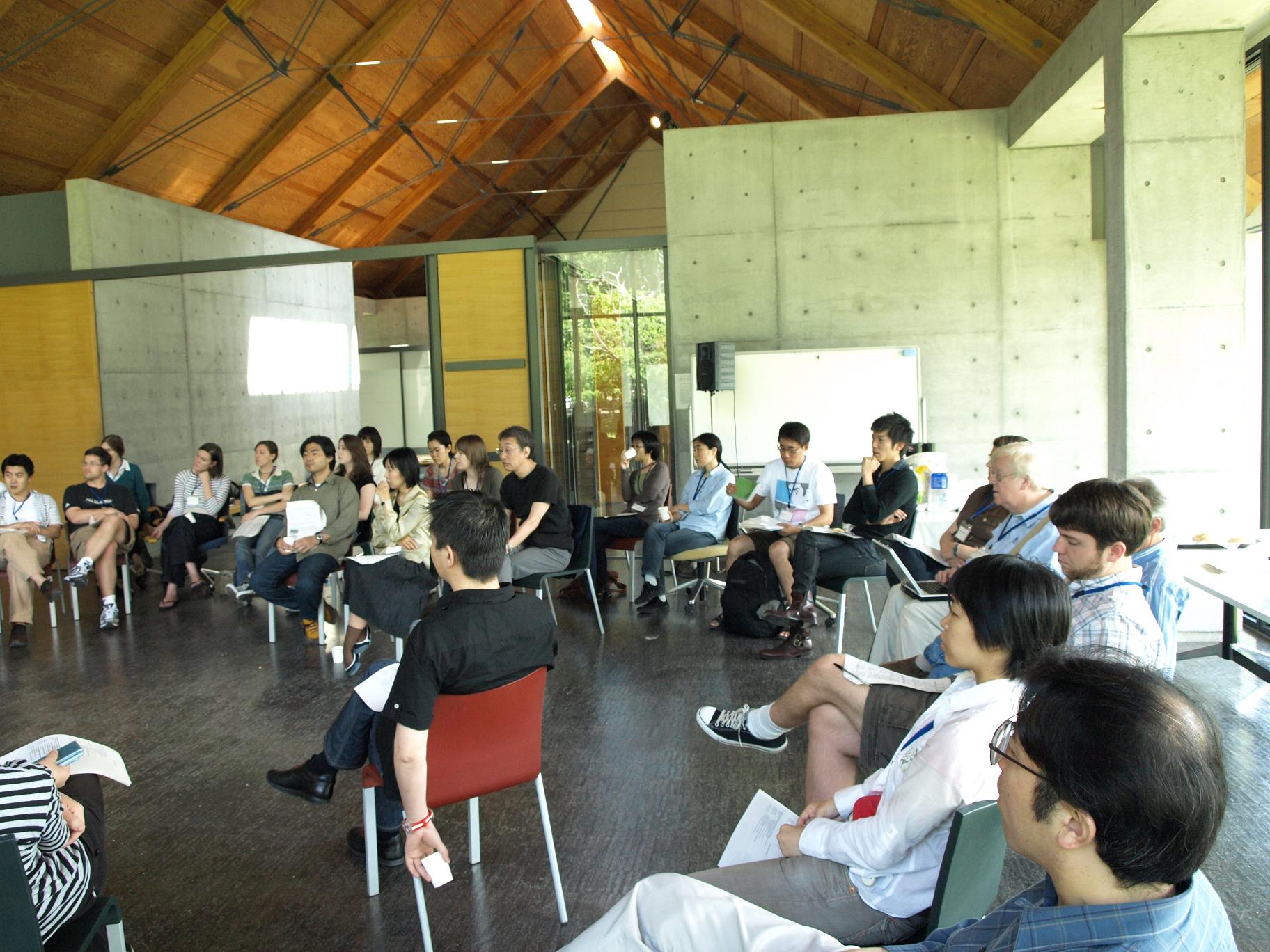 
Schedule and Contents:
June 11
9:00 - 9:50 Presentation 1: Masanori Takezawa
“Information representation and cognitive algorithms in evolutionary models of cooperation”
|
Evolutionary game theorists model human behavior as strategies in the games. Strategies in the games of cooperation often implicitly include cognitive algorithms that acquire and utilize information such as trustworthiness, reputation and group membership of the other individuals for deciding the behavior. As is illustrated by that the humans are capable in processing natural frequencies but not probability format of event information (Gigerenzer & Hoffrage, 1995), one important feature of cognitive algorithms is that they are adaptively designed to process specific format of information that had existed in the evolutionary history (Gigerenzer, 2000). Studies ignoring the problem of information representation may endanger scientific research of cooperation in two different ways; 1) empirically testing hypotheses derived from evolutionary models under unrealistic settings and draw a wrong conclusion, 2) overlooking an important cognitive algorithm that may have evolved in the evolutionary history when modeling human cooperation. In order to demonstrate an importance of information representation in evolutionary models of cooperation, I will report two experimental studies - a study on cognitive algorithms for computing reputation in the indirect reciprocity settings and roles of first- and second-order mind reading in one-shot prisoner’s dilemma game.
|
10:00 - 10:50 Presentation 2: Clark Barrett
“Domain specificity in cultural transmission”
|
Sometimes domain specificity and cultural transmission are taken to be mutually exclusive or zero-sum explanations for phenomena, such that to the degree that cultural transmission is involved in some aspect of human behavior or cognition, domain specificity is not. However, natural selection can shape learning systems to give them an advantage via built-in expectations or biases about the structure of the environment, sometimes known as prepared learning. This might be the case in human cultural transmission systems in cases where cultural transmission leverages phylogenetically older systems, and / or in cases where there exist stable social learning problems that humans have faced related to particular kinds of content. A case in point might be learning about local dangers, a domain where information from knowledgeable conspecifics might be particularly valuable. In this talk, I present several recent studies of prepared learning about danger in cultural transmission among Shuar, Fijians and Americans by myself, James Broesch, and Joe Henrich, and use these to discuss some possible general principles of domain specificity in cultural transmission. |
11:20 - 12:10 Presentation 3: Keiko Ishii
“Faces Augment Attention to Vocal Affect: Stroop Interference and N400”
|
In interpersonal communication, vocal affect often reveals the speaker's relational attitudes more potently than verbal content (O'Sullivan et al., 1985; Zuckerman et al., 1982). Because knowing partners' relational attitudes is crucial in subsequent social interaction, people may be expected to automatically allocate attention to vocal affect especially when they are relationally engaged (Pickett et al., 2004). Here we show that automatic attention to vocal affect is enhanced by a mere exposure to schematic faces. Attention to vocal affect was indexed by a prolonged response time in a judgment of the meaning of a word as positive or negative when the word is spoken in an incongruous (as opposed to congruous) vocal tone (Ishii, Reyes, & Kitayama, 2003; Kitayama & Ishii, 2002). Moreover, this behavioral effect was expected to be accompanied by a negative EEG peak (called N400) occurring several hundreds milliseconds after the stimulus presentation (Schirmer & Kotz, 2003; Schirmer et al.,2006). We observed both of these effects. Of importance, these effects were reliably larger when we exposed participants to schematic faces right before the stimulus presentation to allegedly illustrate the judgment task. Our results demonstrate that cues for social engagement such as faces are sufficient to automatically induce attention to vocal affect. We anticipate that further research into the patterns of brain activation can help us identify specific brain pathways involved in the regulation of top-down attention in social interaction.
|
12:10 - 14:00 Poster presentation & Lunch break
14:00 - 14:50 Presentation 4: Robert Kurzban
“The Myth of Altruistic Punishment and the Design of Moralistic Punishment”
|
“Altruistic punishment” -- imposing costs on others when doing so has no return material benefit to the punisher -- continues to receive a great deal of attention. However, the conceptual underpinnings of the phenomenon are suspect and the data on which claims of the existence of altruistic punishment are weak. In contrast, evidence is gathering that provides insight into the design of a system that looks well-engineered to lead to the imposition of costs on people who commit norm violations, even if no one is harmed by the violation. Taken together, data from multiple methods suggest that the imposition of costs on others might be characterized by motives that are retributive or moralistic, but not altruistic. This leaves two important mysteries left unexplained, one sociological, and one scientific. First, why has a theoretically weak and empirically bankrupt idea propagated with such ease and speed though the scientific community? Second, why does the human mind seem to have features that cause it to desire the imposition of costs on individuals who violate seemingly arbitrary moral rules?
|
15:00 - 15:50 Presentation 5: Toko Kiyonari
“Free-riding may be thwarted by second-order rewards rather than punishment”
|
Cooperation among non-relatives can be puzzling because cooperation often involves incurring costs to confer benefits on unrelated others. Punishment of non-cooperators can sustain otherwise fragile cooperation, but the provision of punishment suffers from a “second-order” free-riding problem since non-punishers can free-ride on the benefits from costly punishment provided by others. One suggested solution to this problem is “second-order punishment” of non-punishers; more generally, the threat or promise of higher-order sanctions might maintain the lower-order sanctions that enforce cooperation in collective action problems. Here we report three experiments testing people’s willingness to provide second-order sanctions by having participants play a cooperative game with opportunities to punish and reward each other. We found that people supported those who rewarded cooperators either by rewarding them or by punishing non-rewarders, but people didn’t support those who punished non-cooperators – they didn’t reward punishers or punish non-punishers. Furthermore, people didn’t approve of punishers more than non-punishers even when non-punishers were clearly unwilling to use sanctions to support cooperation. Our results suggest that people will much more readily support positive sanctions than they will support negative sanctions. |
16:10 - 17:00 Presentation 6: Steven Gaulin
“Fatty Females, Favorite Forms, and Food for Thought: Studies of the Waist-Hip Ratio Unite Mating Psychology and Neurodevelopment”
|
This research is motivated by three related questions: 1) Why do women carry more body fat than men while nonhuman primates show no sex differences in body fat? 2) Why do women distribute their body fat differently than men? 3) Why is female fat distribution an important dimension of attractiveness? The answers seem to be related to the large size of the human brain and the resultant increase in the need for materials to build this brain, most importantly long-chain, polyunsaturated fatty acids (LCPUFA). In general, these LCPUFA are synthesized from dietary precursors and stored preferentially in the gluteofemoral depot (as hip and thigh fat). This argument is supported by various independent lines of evidence, including patterns of female sexual maturation, the effects of parity on female fat distribution, and correlations between waist-hip ratio and cognitive performance. In addition to their theoretical significance, these findings have important public-health implications. For example, the balance of LCPUFA in the diet predicts: A) obesity rates in a large cross-national data set, and B) cognitive performance in US children and adults. |
Poster presentation
- An Evolved Internal Regulatory Variable for Making Welfare Tradeoffs
Andrew Delton, Theresa Robertson, Daniel Sznycer, Julian Lim, Leda Cosmides, & John Tooby
- Intentions, emotions and the recalibration of welfare tradeoff ratios: gratitude as a case study
Julian Lim, Daniel Sznycer, Andrew Delton, Theresa Robertson, Leda Cosmides, & John Tooby
- Physical and cognitive predictors of cultural abilities across the lifespan
Eric Schniter
- The effects of male social status on reproductive success and health: evidence from the Tsimane of Bolivia
Chris von Rueden & Michael Gurven
- Foraging Adaptations in Spatial Cognition
Max M. Krasnow, Danielle Truxaw & Steven J. C. Gaulin
- Humans accurately estimate others' welfare tradeoff ratios
Daniel Sznycer, Julian Lim, Andrew Delton, Theresa Robertson, John Tooby, & Leda Cosmides
- Development of Tool Use
Danielle Truxaw, Max M Krasnow, & Tamsin German
- Costs and benefits of fat-free muscle mass in men: relationship to mating success, dietary requirements, and natural immunity
William D. Lassek & Steven J. C. Gaulin
- Dominance and attractiveness depend on different parameters in men's voices: The relative roles of mean pitch and pitch variation
C.R. Hodges, D.A. Puts, & S.J.C.Gaulin
- Collective action in egalitarian and inegalitarian groups
Sangin Kim
- Are there nonverbal cues to cooperation? An experimental study using a prisoner's dilemma game
Mizuho Shinada, Michiko Koizumi, Shigehito Tanida, Hirofumi Hashimoto, & Toshio Yamagishi
- Cooperators tend to see human faces in abstract figures
Shigehito Tanida, Hirofumi Hashimoto, & Toshio Yamagishi
- Does the existence of the outgroup mean contamination to females but an obstacle to males?: Sex differences in the perception of intergroup threat
Kunihiro Yokota & Masaki Yuki
- The 'Evoked Culture' Approach to Cultural Variations in the Importance of Self-Esteem (1): A cross-national comparison,
Kosuke Sato, Masaki Yuki, Kosuke Takemura, Joanna Schug, & Shigehiro Oishi
- The ‘evoked culture’ approach to cultural variations in the importance of self-esteem (2): A secondary data analysis,
Kosuke Takemura & Masaki Yuki
- Sex difference of ingroup bias in minimal groups
Nobuhiro Mifune & Toshio Yamagishi
- Decisions under ambiguity: Effects of sign and magnitude
Keigo Inukai & Taiki Takahashi
- The Human’s risk preference for variable-time choice:Why humans and animals are risk-prone?
Takumi Komuro, Tomohiro Kawaguchi, & Tatsuya Kameda
- Group-based reciprocity as an adaptive strategy for generalized exchange
Yutaka Horita & Toshio Yamagishi
- Self-disclosure as a costly signal of commitment: The effects of culture, social structure, and domain
Joanna Schug, Masaki Yuki & William W. Maddux
- Default adaptive strategy in a social setting
Hirofumi Hashimoto & Toshio Yamagishi
- What motivates men to risk-seeking behavior?
Aiko Murata, Takumi Komuro, Minako Ishiyama, Hiroshi Takei, Tatsuya Morimoto, & Tatsuya Kameda
- Culture and the perception of emotion
Kotomi Mayama, Keiko Ishii, Yuri Miyamoto, & Paula Niedenthal
- Behavioral Assortment in a Group Task: How do people react to social-frequency information in a group task with a marginally-diminishing return curve?
Nobuye Ishibashi, Tatsuya Kameda, & Reid Hastie
June 12 & 13
Graduate students were divided into 4 small groups and discussed several issues on "Cooperation", "Culture, Ethology, Environment", "Social Emotion", and "Cognition, Personality, and Risk" for about 30 minutes per each of the four topics. After discussions on each topic, a session of general discussions was set where the faculty members also joined and made comments to facilitate the participants to understand mutually their thoughts.
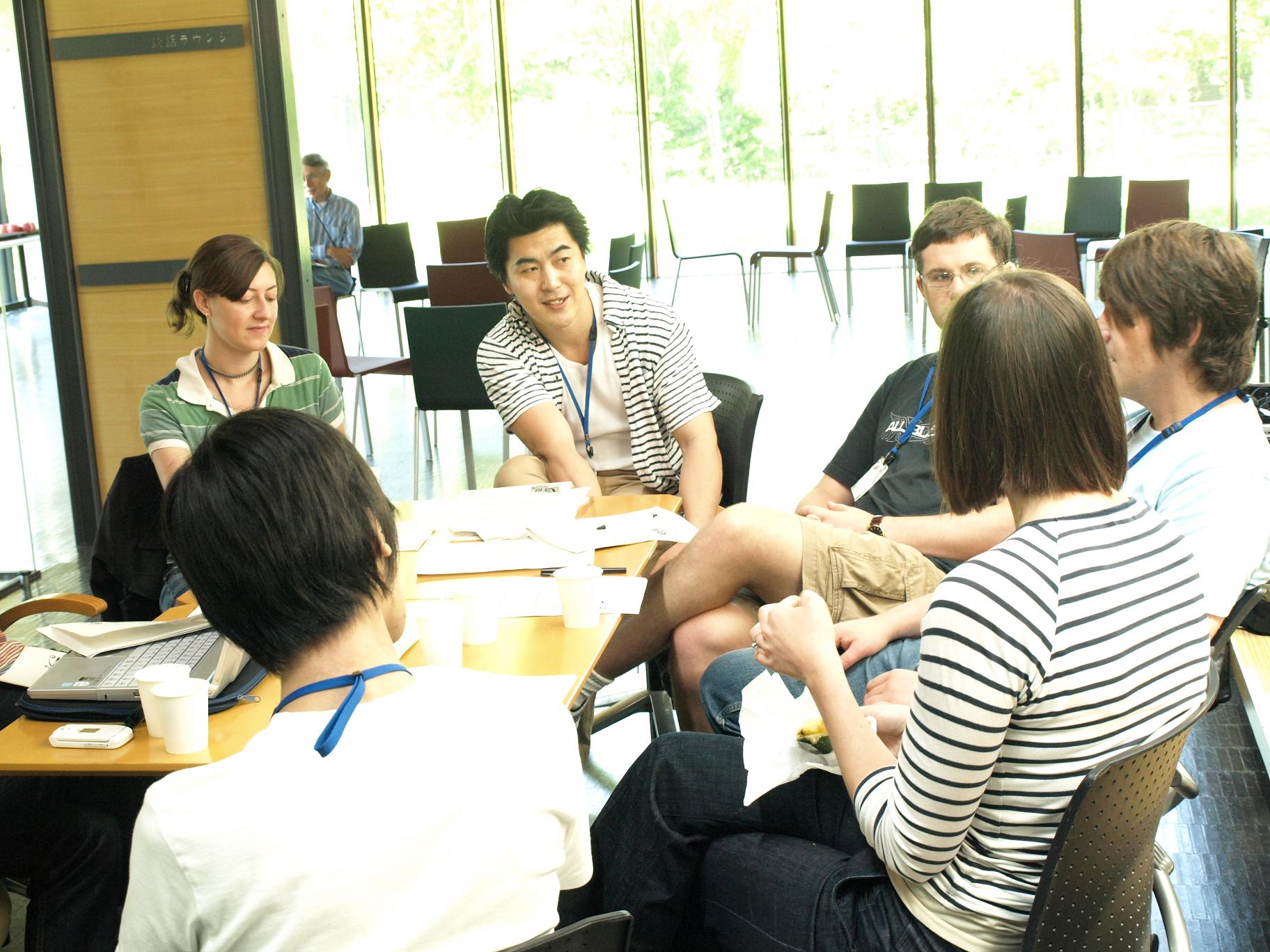 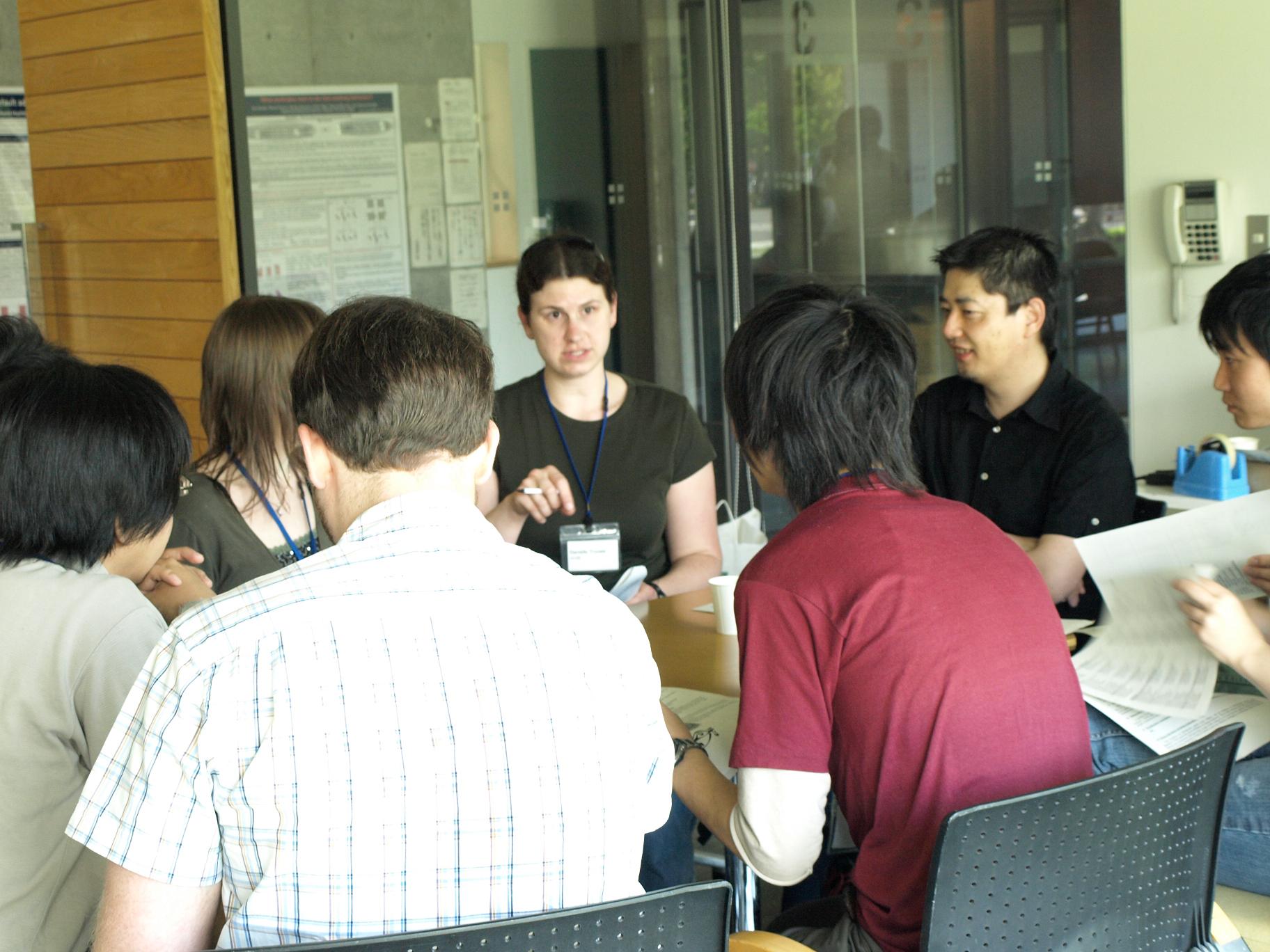
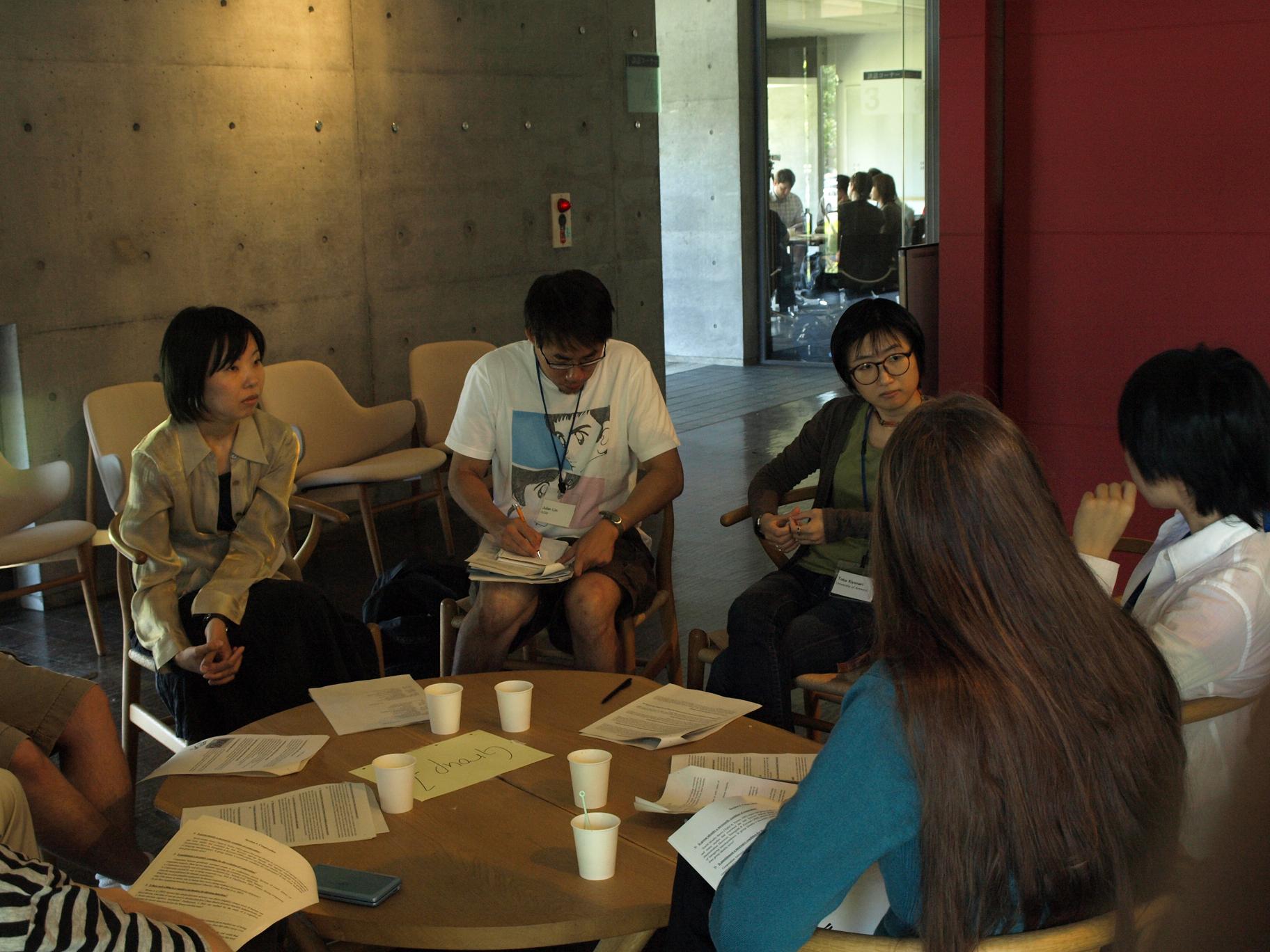 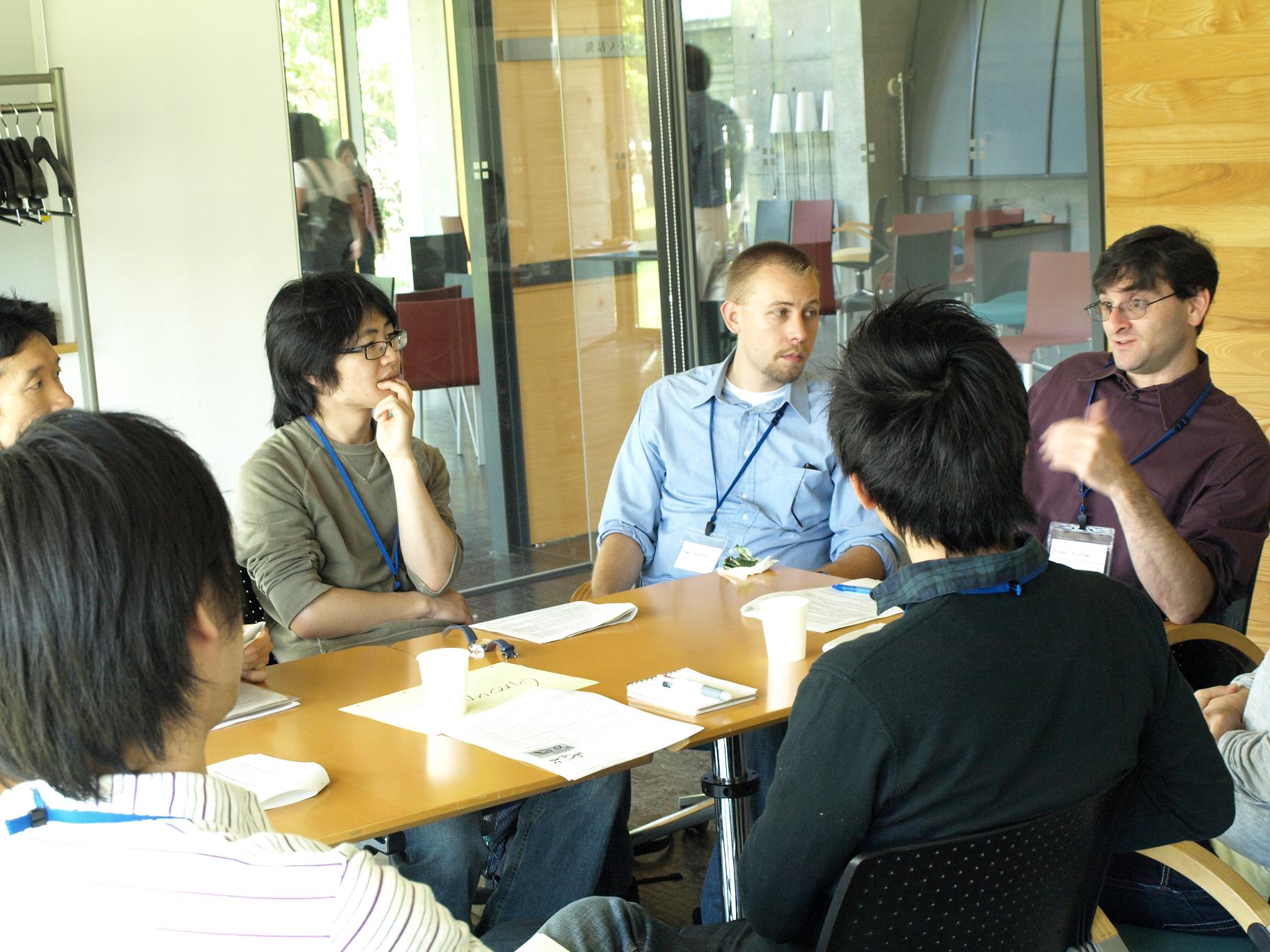
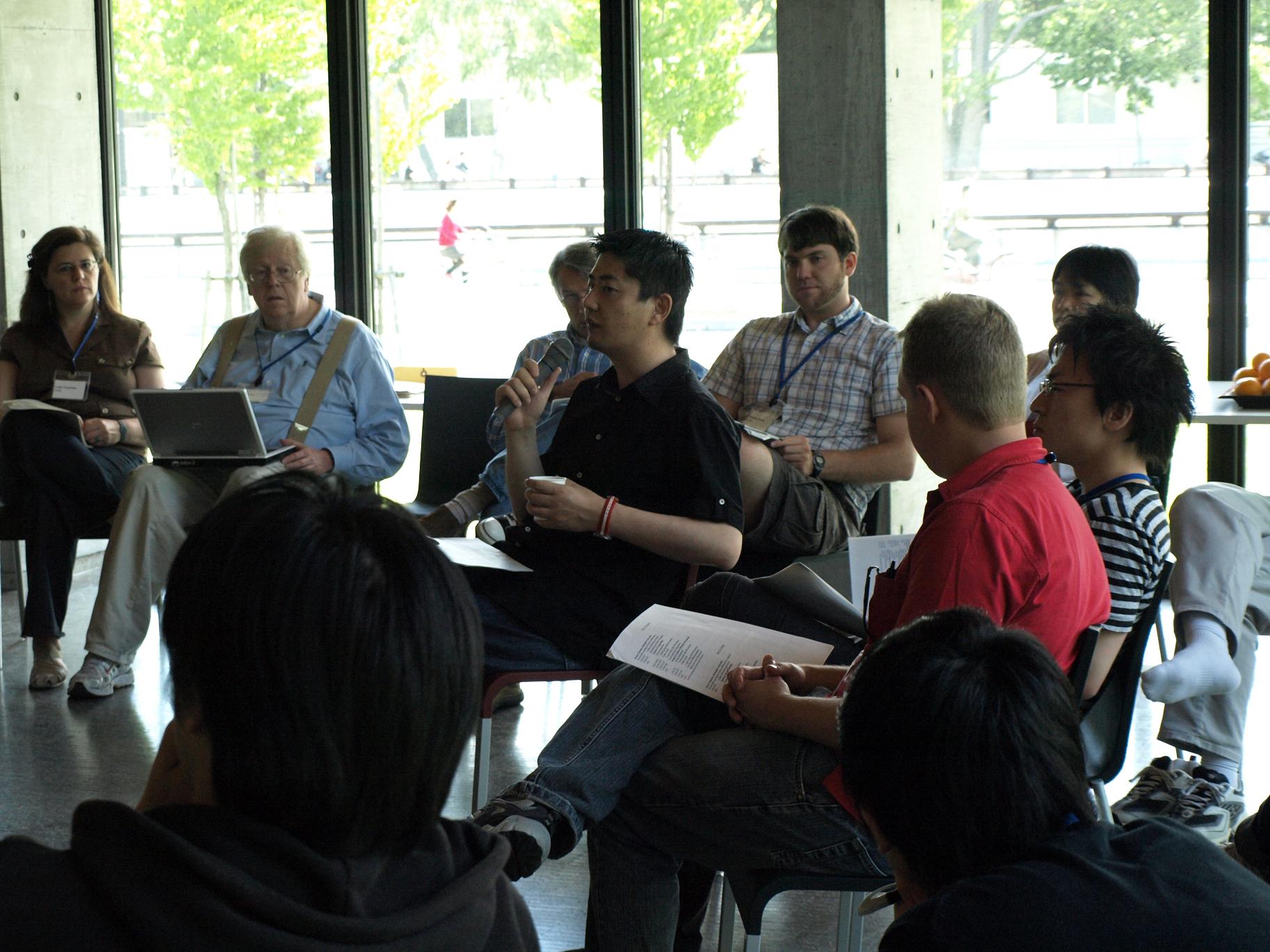 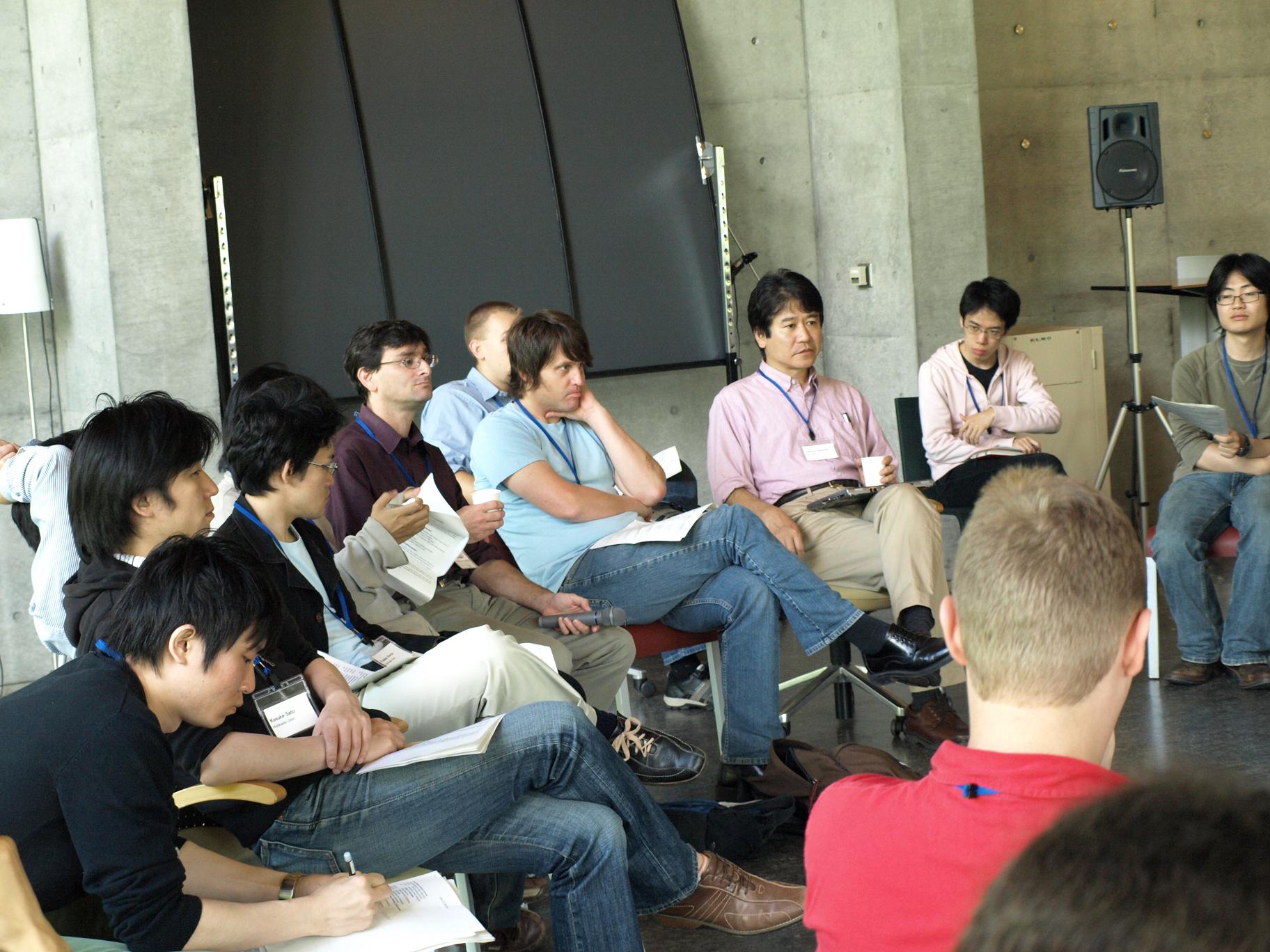
+ Return to the Top of International Symposia |